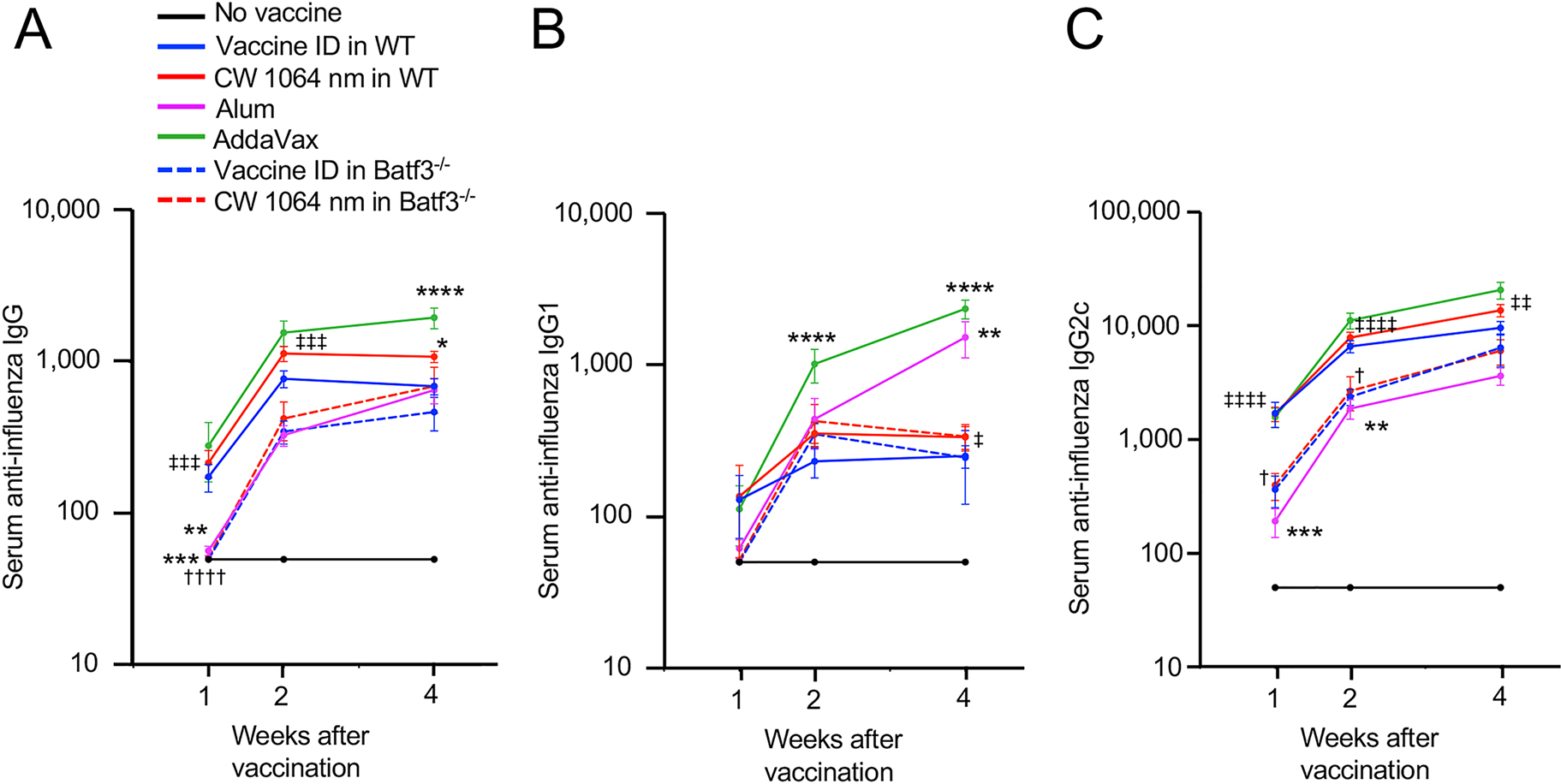Figure 2:

The effect of NIR laser adjuvant on early antibody responses and a critical role of skin the cluster of differentiation 103+ (CD103+) dendritic cells (DCs) in the antibody responses. The effect of NIR laser on anti-influenza antibody responses was evaluated in wild type (WT) and CD103+ DC-deficient the basic leucine zipper transcription factor ATF-like 3 knockout (Batf3−/−) mice. WT and Batf3−/− mice were vaccinated intradermally (ID) with 1 μg of inactivated influenza virus (A/PR/8/34) with or without the NIR laser exposure or alum or AddaVax adjuvant. Immune correlates were analyzed at weeks 1, 2, and 4. Plates for enzyme-linked immunosorbent assay (ELISA) were coated with the inactivated influenza virus. Serum anti-influenza specific (A) immunoglobulin G (IgG), (B) IgG1, and (C) IgG2c are shown. (A–C) n = 30, 38, 34, 14, 25, 5, 8 for no vaccine, vaccine ID only in WT, vaccine ID + NIR laser in WT, vaccine + Alum ID, vaccine + AddaVax ID, vaccine ID only in Batf3−/−, vaccine ID + NIR laser in Batf3−/− groups, respectively. P values are based on a two-way treatment by time ANOVA with Tukey post hoc tests. *P < 0.05, **P <0.01, ***P < 0.001, ****P < 0.0001 as compared to the ID-only group in WT mice; †P < 0.05, ††††P < 0.0001 as compared to the NIR laser group in WT mice; ‡P < 0.05, ‡‡P < 0.01, ‡‡‡P < 0.001, ‡‡‡‡P < 0.0001 as compared to the alum group.
